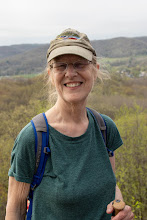10.01.2015
Passive Program Palooza
Time is a precious commodity for us all in libraries. One way to create tremendous bang for our buck is by incorporating passive (or, as I like to call them, stealth) programs into our programming offerings.
I think of these programs as "stealth" programs because they subtly invite our kids and families into the library and help us do our work of literacy support through the effort the families put in rather than having library staff front and center directing.
"Active" programming (hosted/presented by staff or volunteers; taking place at a specific date/time/place) is often the most common type of programming found in libraries. Think storytimes, afterschool workshops and clubs, one time special events, field trips, etc.
But passive/stealth programs can present great opportunities to stretch time, budget and staff in ways that give agency to the children and families involved. These programs take some initial planning to set up but once in place are easily administered by staff. The families and kids provide the "power" on their own time and these types of programs encourage frequent return visits to the library.
Examples of stealth programs that we all do? Summer Library Programs! And 1000 Books Before K Clubs* that many of us do are also great examples!
What are some other examples of these types of programs?
Check-out Clubs - these initiatives which can last from 3 weeks to 8 weeks or more encourage kids to check out materials and do a "thing." Great examples of these include Lego Check-Out club, BackPack Buddies, Ice Cream Club, Free-quent Readers and Smart Cookie club.
Scavenger Hunts - whether inside the library challenging kids to discover book collections or beloved characters or outside the library tying into larger community efforts, these often short-term initiatives are a perfect why to program during school breaks or to quickly have something ready is school is cancelled. Examples of these include Dinovember, Book Character Hunts, Gnome Hunt, and Undercover Spy Club.
DIY Stations - these ongoing efforts (or short duration!) invite kids to create, write, draw, imagine and make that require minimal staff effort. Some paper, markers or crayons easily changed writing/drawing/creating prompts and challenges support multiple literacies. Examples of these include Stories in Action tables, exploration stations, or check out Amanda Struckmeyer Moss and Svetha Hetzler's book DIY Programming and Book Displays (Libraries Unlimited, 2010) for a year's worth of easy and delightful DIY ideas.
Whether you are doing passive programs for Teens or kids, this Pinterest board is chockful of great ideas from librarians around the country to make passive/stealth programs as easy as pie!
*I'll be doing a "how-to" 1000 Books webinar on Oct 21. You can register for this free webinar here
Subscribe to:
Post Comments (Atom)


Thank you so much for posting this! Our focus this year is more passive programming and seeing what others do is awesome. I actually just emailed you a few questions about your cookie club--I had book marked the post last year sometime and set a reminder in my phone to come back to it :) -Laura
ReplyDeleteI got your email and will be getting back to you!
DeleteGreat! I look forward to hearing from you!
Delete